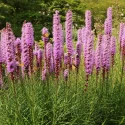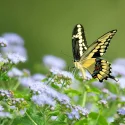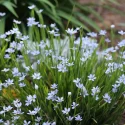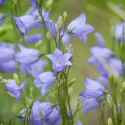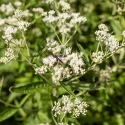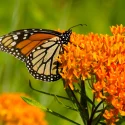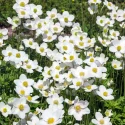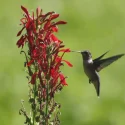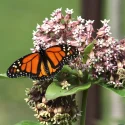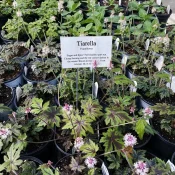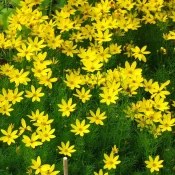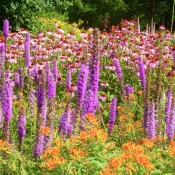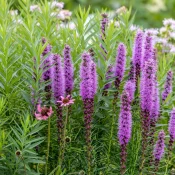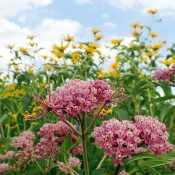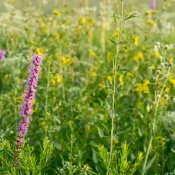These native flowers put on a show twice a year. In the spring, star-shaped blue flowers appear at the top of elegant stalks. (These plants also can go by the common name Bluestar.) In the fall, their leaves turn vibrant shades of yellow. There are 10+ species in the genus, most native to different parts of North America. Let’s make amsonias a new trend for North American gardens—they’re easy to grow and easy to love. Scroll on for planting tips and to meet some nursery-friendly species.
- Full Sun, Part Sun
- Medium (3-5')
- Spring flowers
- Amazing fall color
Why is amsonia a secret?
The question we have to ask today is: why do non-native tulips get the late-spring spotlight instead of native amsonias? Both bloom around the same time, but only one puts on a stunning display in the fall. (Tulips look amazing for two weeks, then drop their petals everywhere before withering up into stringy brown leaves, which remind me of hair caught in a shower drain.)
It is a mystery why this stunning native plant is not well known. It’s time for every American on the eastern and southern states to plant some, and fix this in our lifetimes.
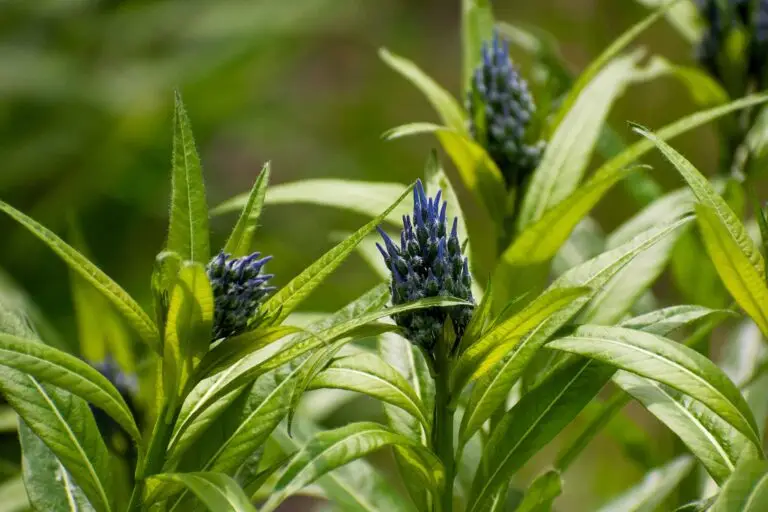
What are the benefits of planting amsonia?
There are so many benefits to planting native amsonias. Some benefits include:
- Easy-care: once native Amsonias are established (which usually takes the first year), they thrive with just rain
- Flowers in the spring, foliage in the fall: as mentioned earlier, this plant offer multi-season interest and lots of visual drama
- They can be tall—unless you’d like them shorter: Most species get 3-4′ tall. If this is too tall for you, you can cut them to half their height after blooming.
- Lots of species for north-to-south options: amsonia has multiple species that thrive throughout North America—scroll on to meet your favorites
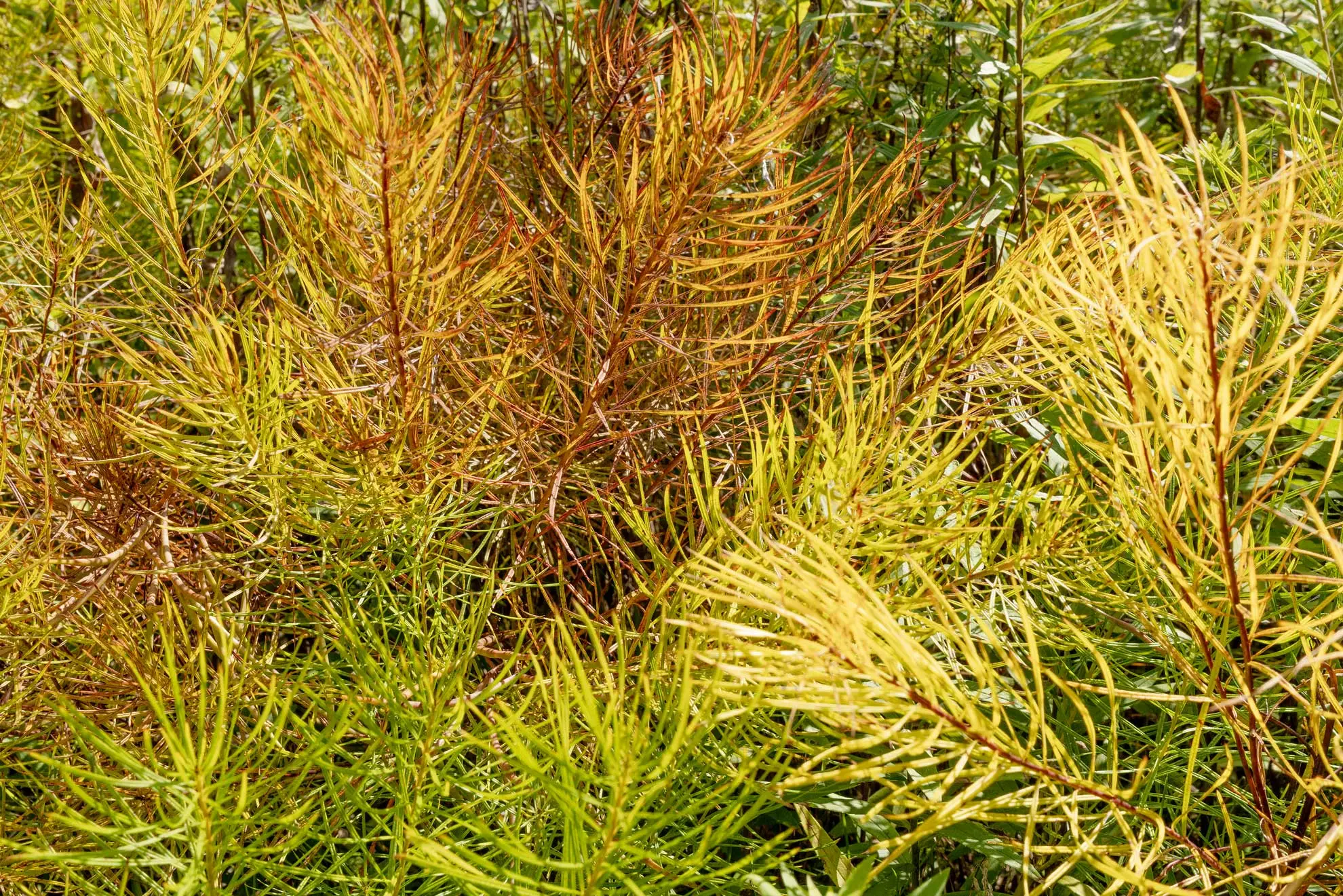
Types of native amsonia
There are 10+ species of native amsonia that offer resilient beauty for United States gardens. Here are some species you may encounter:
Eastern Bluestar, or Willow Amsonia
Amsonia tabernaemontana
The range of Eastern Bluestar is huge—from Massachusetts to Texas! It thrives in full sun to part sun gardens and flowers in the spring. It gets a little tall—2-4’—if this bothers you, trim back the plant to half its height after it blooms. Thankfully, most local plant nurseries stock this plant.
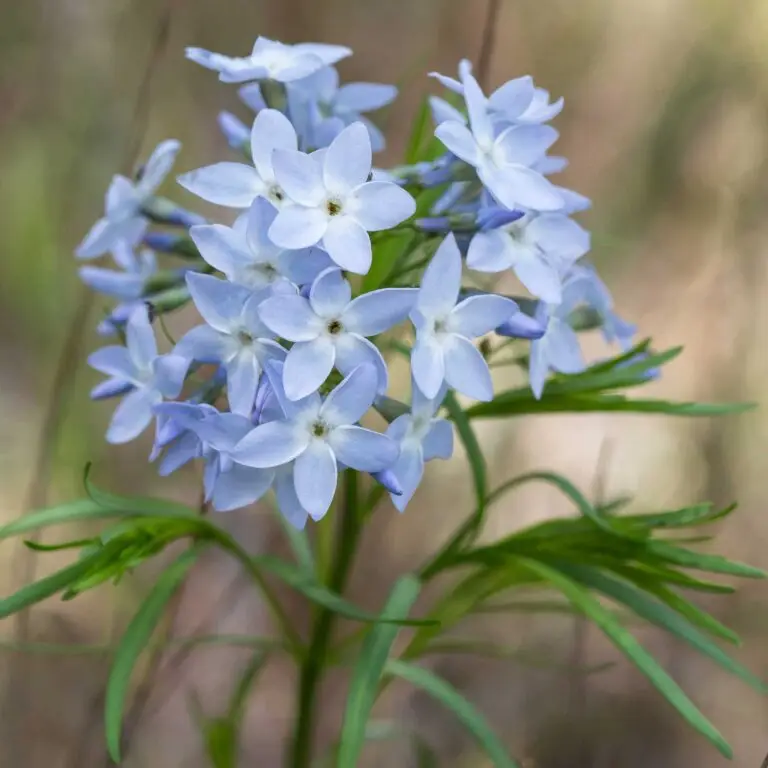
Fringed Bluestar, or Texas Amsonia
Amsonia ciliata
Native to the southern United States (from Florida to Texas), this amsonia offers more rounded blue star-flowers and needle-shaped leaves—a striking combo. It also comes with an added bonus: the ability to thrive in hot southern summers. It’s a little shorter (18-24″) and needs well-drained soil to thrive.
Looking for the other species?
As mentioned earlier, there are over 10 species of amsonia native to North America. No matter where you live in the continental United States, there is a species for you. Click or tap to find an overview of several species, including the two we just met:
10+ Native Species of Amsonia
North American native species of amsonia include:
| Common Name | Latin Name | Native Region |
|---|---|---|
| Southeastern United States | ||
| Fringed Bluestar | Amsonia ciliata | Southeastern U.S. |
| Louisiana Bluestar | Amsonia ludoviciana | Louisiana, Mississippi, Georgia |
| Rigid Bluestar | Amsonia rigida | Georgia to Louisiana |
| Shining Bluestar | Amsonia illustris | Mississippi Valley, Southeastern U.S. |
| Hubricht’s Bluestar | Amsonia hubrichtii | Arkansas, Oklahoma |
| Midwest, Mid-Atlantic and Northeastern United States | ||
| Eastern Bluestar | Amsonia tabernaemontana | Central and Eastern U.S. |
| Southwestern United States | ||
| Jones’ Bluestar | Amsonia jonesii | Arizona, New Mexico, Utah, Colorado |
| Kearney’s Bluestar | Amsonia kearneyana | Arizona |
| Palmer’s Bluestar | Amsonia palmeri | Arizona, New Mexico, Texas |
| Tharp’s Bluestar | Amsonia tharpii | New Mexico, Texas |
| Woolly Bluestar | Amsonia tomentosa | Southwestern U.S. |
| Gulf Coast Region | ||
| Creeping Bluestar | Amsonia repens | Eastern Texas, Southwestern Louisiana |
No matter which one you plant, there is one to stay away from.
Let’s not plant European Bluestar
Planting flowers, shrubs, and trees native to North America is what The Plant Native is all about. Which is why we should steer clear of one amsonia that’s native to Europe: European Bluestar (Amsonia orientalis). Take a moment to check the nursery tag to make sure you’re not planting this bluestar species if you’re planting in North America. You’ll miss out on all the benefits of planting native.
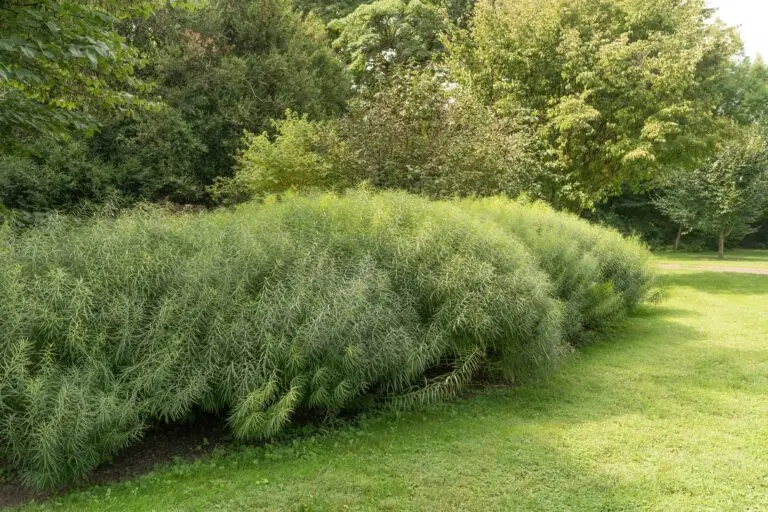
Plant 5+ native amsonias together for maximum impact
Amsonias look best when planted in groups. If you have the space, plant 5+ near each other to help their spring flowers, summer greenery, and fall foliage shine.
If you’re planting Eastern Bluestar, we have a piece of advice…
When planting Eastern Bluestar—get what you need at once
Maybe you’re detail-oriented like we are, and you’ve noticed that some of the amsonia ‘Eastern Bluestar’ pictures here and elsewhere online have slightly different leaf shapes and flowers in different shades of blue. We were skeptical too—is this the same plant?
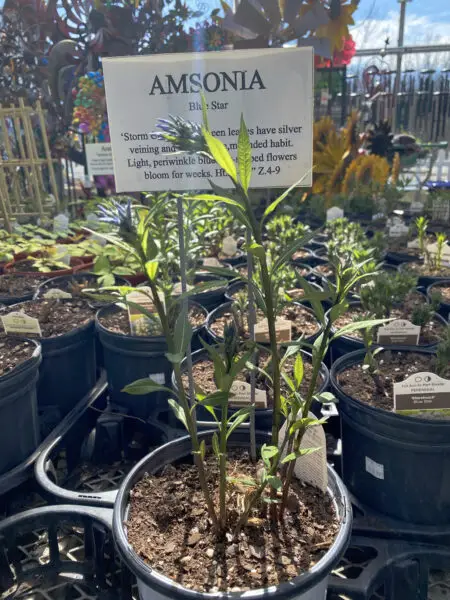
Leaf shapes and flower colors for Eastern Bluestar can vary widely
Eastern Bluestar (Amsonia tabernaemontana) has lots of different varieties that are rarely mentioned on plant nursery tags. Plants with needle-like leaves and others with fuller leaves may both be called Eastern Bluestar. Same for flowers that are a light blue or a more bluer-blue—they all might go by the same name.
This variation is normal for Amsonia. The Flora of North America database notes:
“[Eastern Bluestar] Amsonia tabernaemontana encompasses a great deal of morphological diversity, particularly in leaf size and shape and sepal indument and length, which is to some extent geographically correlated; therefore, the recognition of varieties seems desirable. However, the varieties are not well differentiated and tend to blend into one another, especially where their ranges overlap.”
It’s a good reminder when buying Eastern Bluestar amsonia to buy what you need all at once. You might find a different variety another season or at another nursery.
Where can I find native amsonia?
Looking for places to buy amsonia? Here are four sourcing ideas:
Where can I find seeds and plants?
Finding native plants can be challenging (we partly blame Marie Antoinette.) To make it easier, we’ve assembled four sourcing ideas.
Native Nursery List
300+ native nurseries makes finding one a breeze
Online Native Plant Sellers
We've included 100+ online resources to help
Society Plant Sales
Every state has a native plant society; find yours
Online Communities
Local Facebook groups are a great plant source
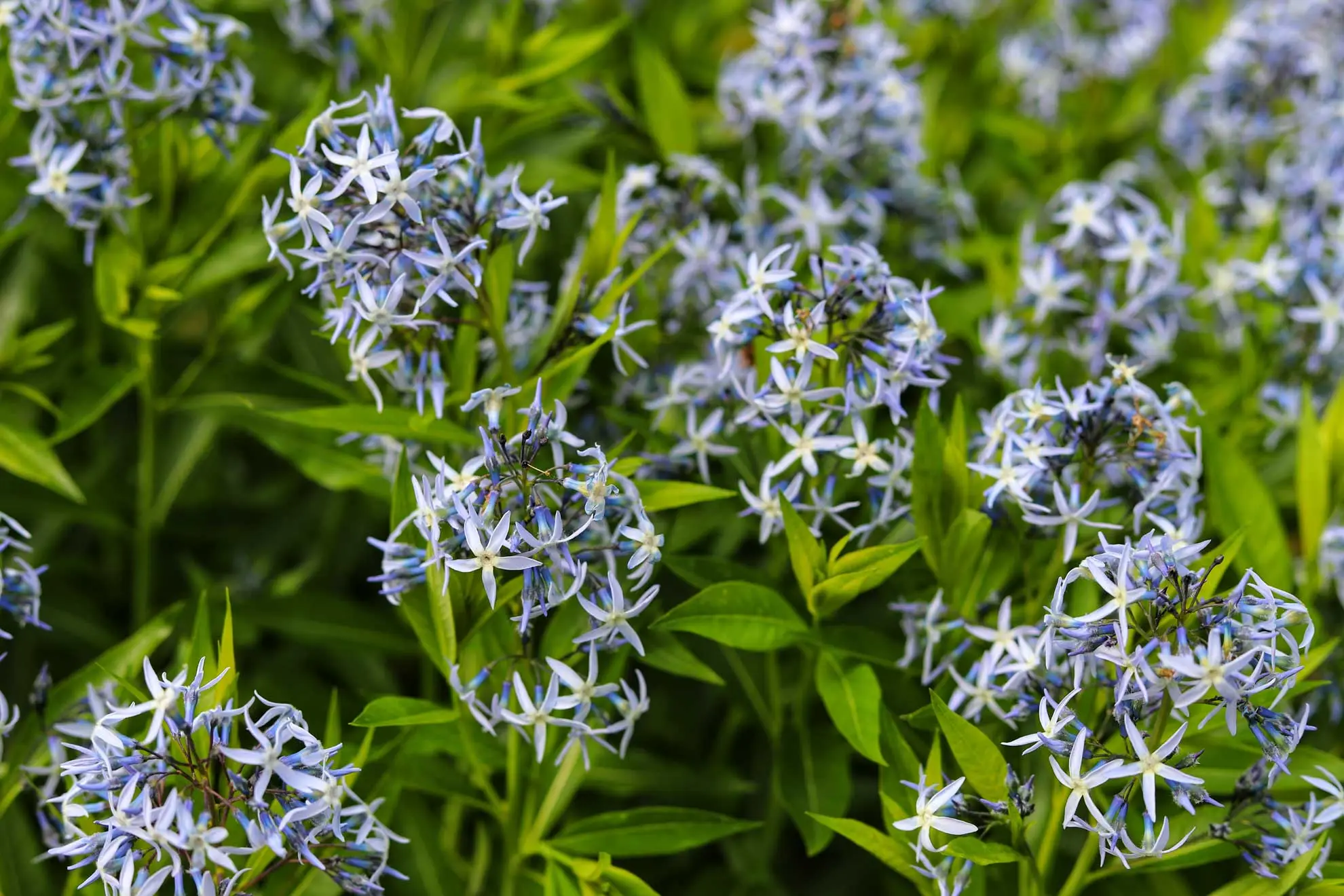
What are good pairings for amsonias?
A great rule of thumb when planting a garden is to pick native plants that bloom from spring to fall, so that pollinators always have a treat. Since amsonias are spring bloomers, pick some other great natives that bloom in the summer and fall to plant alongside. Some ideas include:
Native plants for the summer
Native plants for the fall
If picking native plants feels overwhelming, try three-color landscaping. Pick three colors (one of which will be blue, since you’re planting amsonias) and stick to that palette. Here’s our guide to Three-Color Native Gardens to make it easy.
And that sums up our love letter to planting native amsonias. These beautiful and striking native flowers have been strangely overlooked in landscaping—let’s change that! Amsonias deliver star-filled flowers in the spring, greenery in the summer, and jaw-dropping foliage in the fall. Plant them in groups of 5+ for the most dramatic display. Since they are perennials, plant once and they will come back year-after-year. Don’t forget to pair with natives that bloom in the summer and fall, so your garden will always be filled with flowers and pollinators. Happy planting!
Sources
- Armitage, Allan. Herbaceous Perennial Plants: A Treatise on Their Identification, Culture, and Garden Attributes. United States: Quarto Publishing Group USA, (1989), 34-35.
- Taylor, Patricia A. Easy Care Native Plants. (1996), 232-233.
- Flora of North America, Amsonia tabernaemontana
- USDA Plants Database, Amsonia ciliata
- USDA Plants Database, Amsonia tabernaemontana
- Ladybird Johnson Wildflower Center, Amsonia ciliata
- Ladybird Johnson Wildflower Center, Amsonia tabernaemontana
- Gardening Know-How, Common Amsonia Varieties – Types Of Amsonia For The Garden. December 30, 2022.











